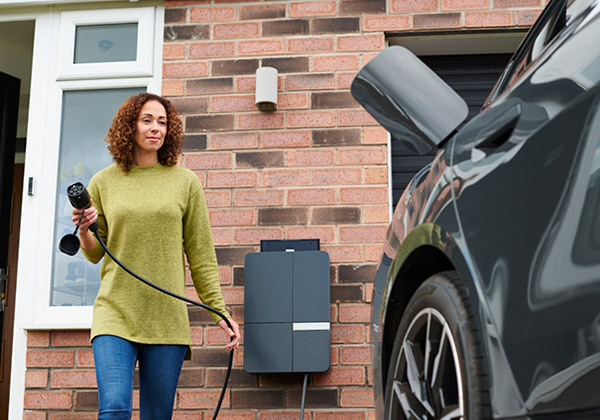Changes to Gas Installation Standards Discussed in Recent Live Event
Statements
Recently, Standards Australia hosted a live event, 'Changes to AS/NZS 5601.1 2022 Gas Installations, Part 1: General Installations'.
Presented by Mr. Enzo Alfonsetti, of Energy Safe Victoria (and the current Chairperson of the Gas Technical Regulators Committee AG006 at Standards Australia), the live webinar aimed to equip participants with essential information about the major changes introduced in the 2022 edition, which replaced the 2013 version.
The event attracted professionals from various sectors, including gas technicians, engineers, contractors, and regulatory authorities, offering a platform for participants to ask questions, and gain valuable insights from an industry expert.
The event covered various key topics such as:
• Multi-layer Piping
• Pipe Sizing
• Commercial Catering Equipment
• Kitchen Rangehood Installation
• Gas Installations in High-Rise Buildings
• New Definitions
Scroll to the bottom of this page to watch the recording of the live event.
Following his presentation, Mr. Alfonsetti took questions from the live audience, and has also followed up with responses to questions he didn't have time to respond to in the live event (below):
When installing multilayer pipe, when and where do I have to install devices to automatically shut off the gas for fire emergency isolation in accordance with clause 5.2.11?
Either a class 1 automatic shut off valve interlocked to a fire safety system such as a fire alarm, sprinkler system or smoke alarm with output connections or a device that senses excessive flow (e.g., excess flow valve) or a pressure loss (e.g., UPSO) must be installed for all new installations and modifications to existing installations such as extensions. However, clause 5.2.11 does not apply to existing installations where an appliance is being replaced.
Automatic shut off valves and UPSOs must be installed as close as practicable to the gas supply point to the building and be readily accessible. Excess flow valves must be installed as close as practicable to the gas supply point to the building and can also be installed at branch take off points in the roof space in accordance with the manufacturer’s instructions. However, consideration must be given to clause 5.3.8 for mechanical joints in a concealed location and clause 5.3.12 for ventilation of consumer piping with mechanical joints in a concealed location if installing excess flow valves in roof spaces. Alternatively, if using only one excess flow valve at the gas supply point to the building then the consumer piping can be increased to the largest appropriate size throughout the entire installation to minimise pressure drops and to ensure that the single excess flow valve will sense the excessive flow throughout the installation.
If the gas meter assembly has an UPSO do I need to install an automatic shutoff device to comply with clause 5.2.11 and will excess flow valves work if the gas meter is undersized?
If the gas meter assembly has an integral UPSO please check with the relevant gas company first as you may not require any additional form of isolation to satisfy clause 5.2.11. If the gas meter is undersized relative to the nominal flow rate of the excess flow valve, then consideration must be given to an alternative solution such as a class 1 automatic shut of valve connected to a fire safety system or an UPSO. Alternatively, consideration should be given to using alternative consumer piping material in accordance with Table 4.2
What length of metallic consumer piping must I use before transitioning to multilayer pipe?
Clause 5.2.12 requires that from the gas meter outlet or outlet of an LPG regulator metallic consumer piping must extend at least 1m into the building before transitioning to multilayer pipe. Similarly, the last 1m of a consumer piping dropper in a wall must be metallic. In addition, clause 6.6.1 requires that multilayer pipe be at least 1m from the nearest part of a gas appliance to prevent heat damage.
When replacing a gas cooker in an existing installation with a 600mm clearance to a rangehood must I install the cooker to the new clearance of 650mm?
The 650mm clearance from a rangehood to the pan support (trivet) of a gas cooker only applies to new kitchen installations. For the replacement of a cooker in an existing installation the appliance can be installed at the same 600mm clearance as the original cooker taken from the same reference point as the original cooker (i.e., either the hob or the top of the highest burner depending on when the original cooker was installed). However, if the replacement cooker installation instructions specify a greater clearance, then the cooker must be installed at the greater clearance.
Does splashback glass adjacent to a cooktop have to be toughened glass and is there a minimum clearance to the periphery of a cooker burner?
Splashback glass adjacent to cooktops must be toughened glass to AS/NZS 2208 to prevent glass shards in the event of breakage due to a fault in the glass or heat stress from an adjacent gas cooktop. There is no requirement or recommendation in AS/NZS 5601.1 for a minimum clearance from a splashback glass to the periphery of the nearest burner although this will be considered in the next revision of AS/NZS 5601.1
Overall, the event was a success, helping to ensure that gas installation professionals are well-informed about the latest standards, safety requirements, and best practices for designing, installing, and commissioning gas installations. Thank you to Mr. Alfonsetti and all the attendees.
AS/NZS 5601.1, Gas installations, Part 1: General installations, is available via the Standards Australia Store and our distribution partners.
Live Event Recording: Changes to AS/NZS 5601.1 2022 Gas Installations, Part 1: General Installations
NOTE: This webinar and other information on this page contains general information and is not formal advice. Users must make their own assessment as to the suitability of this material and the standards referred to herein for their specific business needs.

Recently, Standards Australia hosted a live event, 'Changes to AS/NZS 5601.1 2022 Gas Installations, Part 1: General Installations'.
Presented by Mr. Enzo Alfonsetti, of Energy Safe Victoria (and the current Chairperson of the Gas Technical Regulators Committee AG006 at Standards Australia), the live webinar aimed to equip participants with essential information about the major changes introduced in the 2022 edition, which replaced the 2013 version.
The event attracted professionals from various sectors, including gas technicians, engineers, contractors, and regulatory authorities, offering a platform for participants to ask questions, and gain valuable insights from an industry expert.
The event covered various key topics such as:
• Multi-layer Piping
• Pipe Sizing
• Commercial Catering Equipment
• Kitchen Rangehood Installation
• Gas Installations in High-Rise Buildings
• New Definitions
Scroll to the bottom of this page to watch the recording of the live event.
Following his presentation, Mr. Alfonsetti took questions from the live audience, and has also followed up with responses to questions he didn't have time to respond to in the live event (below):
When installing multilayer pipe, when and where do I have to install devices to automatically shut off the gas for fire emergency isolation in accordance with clause 5.2.11?
Either a class 1 automatic shut off valve interlocked to a fire safety system such as a fire alarm, sprinkler system or smoke alarm with output connections or a device that senses excessive flow (e.g., excess flow valve) or a pressure loss (e.g., UPSO) must be installed for all new installations and modifications to existing installations such as extensions. However, clause 5.2.11 does not apply to existing installations where an appliance is being replaced.
Automatic shut off valves and UPSOs must be installed as close as practicable to the gas supply point to the building and be readily accessible. Excess flow valves must be installed as close as practicable to the gas supply point to the building and can also be installed at branch take off points in the roof space in accordance with the manufacturer’s instructions. However, consideration must be given to clause 5.3.8 for mechanical joints in a concealed location and clause 5.3.12 for ventilation of consumer piping with mechanical joints in a concealed location if installing excess flow valves in roof spaces. Alternatively, if using only one excess flow valve at the gas supply point to the building then the consumer piping can be increased to the largest appropriate size throughout the entire installation to minimise pressure drops and to ensure that the single excess flow valve will sense the excessive flow throughout the installation.
If the gas meter assembly has an UPSO do I need to install an automatic shutoff device to comply with clause 5.2.11 and will excess flow valves work if the gas meter is undersized?
If the gas meter assembly has an integral UPSO please check with the relevant gas company first as you may not require any additional form of isolation to satisfy clause 5.2.11. If the gas meter is undersized relative to the nominal flow rate of the excess flow valve, then consideration must be given to an alternative solution such as a class 1 automatic shut of valve connected to a fire safety system or an UPSO. Alternatively, consideration should be given to using alternative consumer piping material in accordance with Table 4.2
What length of metallic consumer piping must I use before transitioning to multilayer pipe?
Clause 5.2.12 requires that from the gas meter outlet or outlet of an LPG regulator metallic consumer piping must extend at least 1m into the building before transitioning to multilayer pipe. Similarly, the last 1m of a consumer piping dropper in a wall must be metallic. In addition, clause 6.6.1 requires that multilayer pipe be at least 1m from the nearest part of a gas appliance to prevent heat damage.
When replacing a gas cooker in an existing installation with a 600mm clearance to a rangehood must I install the cooker to the new clearance of 650mm?
The 650mm clearance from a rangehood to the pan support (trivet) of a gas cooker only applies to new kitchen installations. For the replacement of a cooker in an existing installation the appliance can be installed at the same 600mm clearance as the original cooker taken from the same reference point as the original cooker (i.e., either the hob or the top of the highest burner depending on when the original cooker was installed). However, if the replacement cooker installation instructions specify a greater clearance, then the cooker must be installed at the greater clearance.
Does splashback glass adjacent to a cooktop have to be toughened glass and is there a minimum clearance to the periphery of a cooker burner?
Splashback glass adjacent to cooktops must be toughened glass to AS/NZS 2208 to prevent glass shards in the event of breakage due to a fault in the glass or heat stress from an adjacent gas cooktop. There is no requirement or recommendation in AS/NZS 5601.1 for a minimum clearance from a splashback glass to the periphery of the nearest burner although this will be considered in the next revision of AS/NZS 5601.1
Overall, the event was a success, helping to ensure that gas installation professionals are well-informed about the latest standards, safety requirements, and best practices for designing, installing, and commissioning gas installations. Thank you to Mr. Alfonsetti and all the attendees.
AS/NZS 5601.1, Gas installations, Part 1: General installations, is available via the Standards Australia Store and our distribution partners.
Live Event Recording: Changes to AS/NZS 5601.1 2022 Gas Installations, Part 1: General Installations
NOTE: This webinar and other information on this page contains general information and is not formal advice. Users must make their own assessment as to the suitability of this material and the standards referred to herein for their specific business needs.

Email:

Email:


